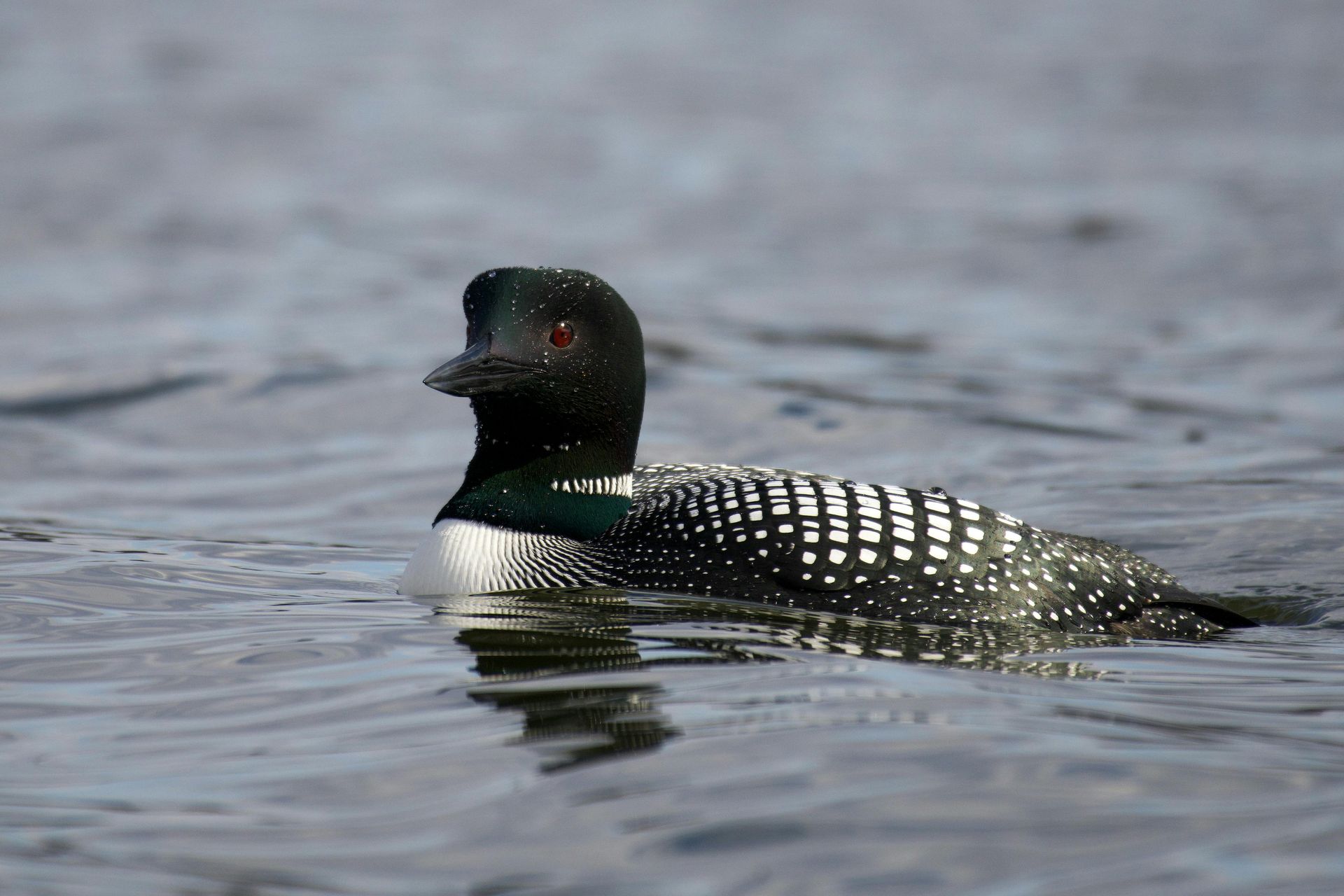Loons are large, aquatic birds known for their haunting calls, striking plumage, and excellent diving abilities. Found on freshwater lakes and coastal waters in North America and northern Europe, loons are a symbol of wilderness and play an essential role in aquatic ecosystems by controlling fish populations.
Loons range from 24 to 40 inches in length with wingspans up to 60 inches. They have black-and-white patterned plumage, dagger-like bills, and striking red eyes, which enhance their vision underwater. Common species include the Common Loon and the Red-throated Loon.
Loons are expert divers, capable of reaching depths of over 200 feet to catch fish, their primary food source. They build floating nests on the edges of lakes, typically laying 1-2 eggs per clutch. Both parents share incubation duties and care for the chicks, which are able to swim shortly after hatching but rely on their parents for food and protection.
Natural predators of loons include eagles, large fish, and raccoons, which may target eggs and chicks. Human-related threats such as habitat destruction, pollution, and fishing gear entanglement pose significant risks. Despite these challenges, loons are often used as indicators of lake health due to their sensitivity to environmental changes.

For your safety and the well-being of wildlife, please observe animals from a distance and avoid touching or disturbing them. If you encounter an animal that appears injured or in distress, contact a licensed wildlife rescue organization for guidance before intervening.
Found An Animal? Not sure how to help a wild animal in need? Learn when to step in, who to call, and how to help safely.
Did You Know?
- Loons have solid bones, unlike most birds, which help them dive but make takeoff more challenging.
- Their eerie calls are used to communicate territory defense and contact between mates and chicks.
- Common Loons can live up to 30 years in the wild.
- Loons can stay underwater for over a minute and swim great distances while submerged.
- During the breeding season, loons develop striking black-and-white plumage, which molts to a duller gray in winter.
- Unlike most birds, loons cannot take off from land and require a long water runway for flight.
- The red eyes of loons help reduce glare and improve underwater vision.
- Loons migrate thousands of miles between breeding lakes and wintering coastal waters.
- Loons are known to carry their chicks on their backs while swimming to keep them safe from predators.
Problems Faced In The Wild
- Habitat Loss: Shoreline development reduces nesting sites.
- Pollution: Mercury contamination, domoic acid, and oil spills harm loons and reduce fish populations.
- Fishing Gear Entanglement: Discarded fishing lines and nets pose serious risks.
- Climate Change: Altered water levels and warming temperatures affect food availability and nesting success.
- Human Disturbance: Recreational activities can disrupt nesting loons and cause stress.
- Predation: Eggs and chicks are vulnerable to predators such as raccoons and large fish.
Tips For Cohabitation
- Preserve Shoreline Vegetation: Protect natural lake edges to provide safe nesting areas.
- Dispose of Fishing Gear Properly: Prevent entanglement by keeping waterways clean.
- Limit Boating Activities: Avoid disturbing loons, especially during the breeding season.
- Monitor Water Quality: Support efforts to reduce pollution and protect aquatic ecosystems.
- Install Floating Nesting Platforms: These can help loons find safe nesting spots on busy lakes.
- Educate the Community: Share information about loons’ role in maintaining healthy freshwater ecosystems.



